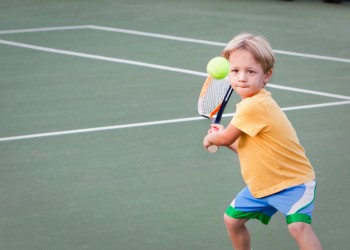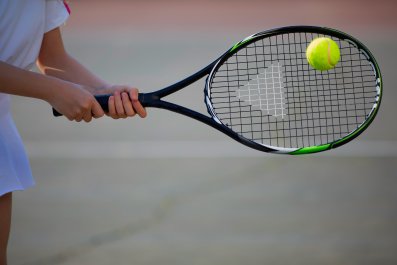For many people, the expression
"solidness" has pessimistic undertones. When you get up in the first
part of the day grumbling of a "solid back," the cure may incorporate
cleaning up, doing some yoga, gulping a headache medicine, or visiting a
physical advisor to slacken up. Firmness is normally seen as undesirable and
can restrict one's physical exercises.
Shockingly, however, for a tip-top
competitors like proficient b-ball players, muscle firmness isn't just
something that is vital, you could state it's their superpower. As a physical
specialist and scientist who works with the National Basketball Association
players, I'm keen on understanding the key factors that help to limit damage
hazard and augment execution in tip-top competitors—and understanding solidness
is a significant piece of that.
Spring In Your
Progression
Physiologists consider muscles
resembling biomechanical springs. Muscles contract to deliver powers that help
you move and stretch to permit enough scope of development. Firmness is an
approach to discuss how springy a muscle is. It is normal for the amount it can
protract because of applied power. The spring of a muscle permits it not
exclusively to extend yet, in addition, to withdraw during muscle compression.
This procedure considers developments including strolling, running, and hopping
The power required to distort or
extend a muscle is related to a level of spring or firmness and to the degree,
the muscle is stretched. Quality is significant, yet firmness can enable a
competitor to produce considerably more power.
B-ball is a vertical game that
incorporates up to 46 bouncing and landing exercises for an individual player
for every game. That is 2 to multiple times more bouncing than in soccer or
volleyball. It's additionally a multi-directional game—a normal player alters
course or action each 2 to 3 seconds, requiring consistent increasing speed and
deceleration of developments.
Lower furthest point firmness is
significant for ideal ball execution since competitors who properly utilize
more prominent solidness qualities can exploit the versatile vitality it makes.
A muscle can just extend so far in light of the fact that its length is
restricted by its level of firmness. In this way, similar to a spring or an
elastic band, when the muscle is extended, that firmness makes flexible the vitality that would then be able to be utilized with a muscle constriction to
enable you to run or bounce on the court.
This enables somebody to like
Russell Westbrook jumps noticeable all around, stop on a dime, at that point
quicken down court during a quick break. It takes him simply 3.36 seconds to
keep running from benchmark to pattern.
The Sweet Spot
In any case, there is a point of
consistent losses. An excessive amount of muscle firmness can prompt diminished
joint movement and a diminished capacity to ingest stun at the joints. This can
put one at more serious hazard for pressure cracks or even osteoarthritis, the
mileage of the ligament that can cause joint torment. Proof recommends that a
lot of firmness may prompt damage.
Also, on the opposite side of the
range, a player needs a specific level of adaptability and joint versatility to
help the best possible prolongation of muscle and ligaments that take into
account the suitable scope of movement.
So players need to adjust these
limits, arrival in the sweet spot of ideal lower furthest point firmness: not
all that much, which can prompt abnormal amounts of power and stacking rates
and a more serious hazard for hard wounds. What's more, not very little, which
is related to an expanded hazard for delicate tissue damage and muscle strains.
My examination group is
researching these connections trying to enable first-class competitors to limit
the danger of damage and amplify execution. The initial step is in
understanding what "typical" clinical estimations are for first-class
competitors.
For instance, a run of the mill
estimation of lower leg adaptability for the normal individual is around 50 to
55 degrees. According to studies the regular player is stiffer and midpoints 35
degrees.
When contrasting world-class
b-ball players with guides standards it may create the impression that they are
excessively tight and even useless. Be that as it may, to be effective in their
game, this level of solidness is really their superpower.
Preparing To Limit
Damage And Augment Execution
Physical advisors realize that the alleged quick jerk muscle
strands—the ones in charge of bouncing and dashing—have a higher penchant for
solidness. With preparing, the degree of firmness can be expanded to improve
execution.
Proof recommends that plyometric and bouncing activities
that include hops, jumps, or limits, performed in a stretch abbreviated cycle
do positively affect the capacity of the muscle to have all the more spring.
Be that as it may, in general, your own level of solidness versus springiness
is a mix of nature and sustain hereditary qualities, and preparing.
The research identified with
better understanding the continuum among solidness and consistency can support
physical specialists and mentors when working with ballplayers. They have to
know measurements—the amount to extend or reinforce. Work is in progress that
adds to this undertaking. There are likewise activities that mean to comprehend
the player load and the total physical requests that first-class competitors
experience when producing quick and incredible developments. Specialists
likewise need to comprehend what the best techniques and advancements are for
checking these heaps. My partners and I hypothesize that there is an ideal
degree of consistency and solidness that helps keep our b-ball legends super.
At
Young India Sports Academy you
don’t just learn about the physical aspects of playing Basketball. But also the
tips and tricks to play basketball efficiently and smoothly. YISA encourages
all age groups and gender to play with them.







